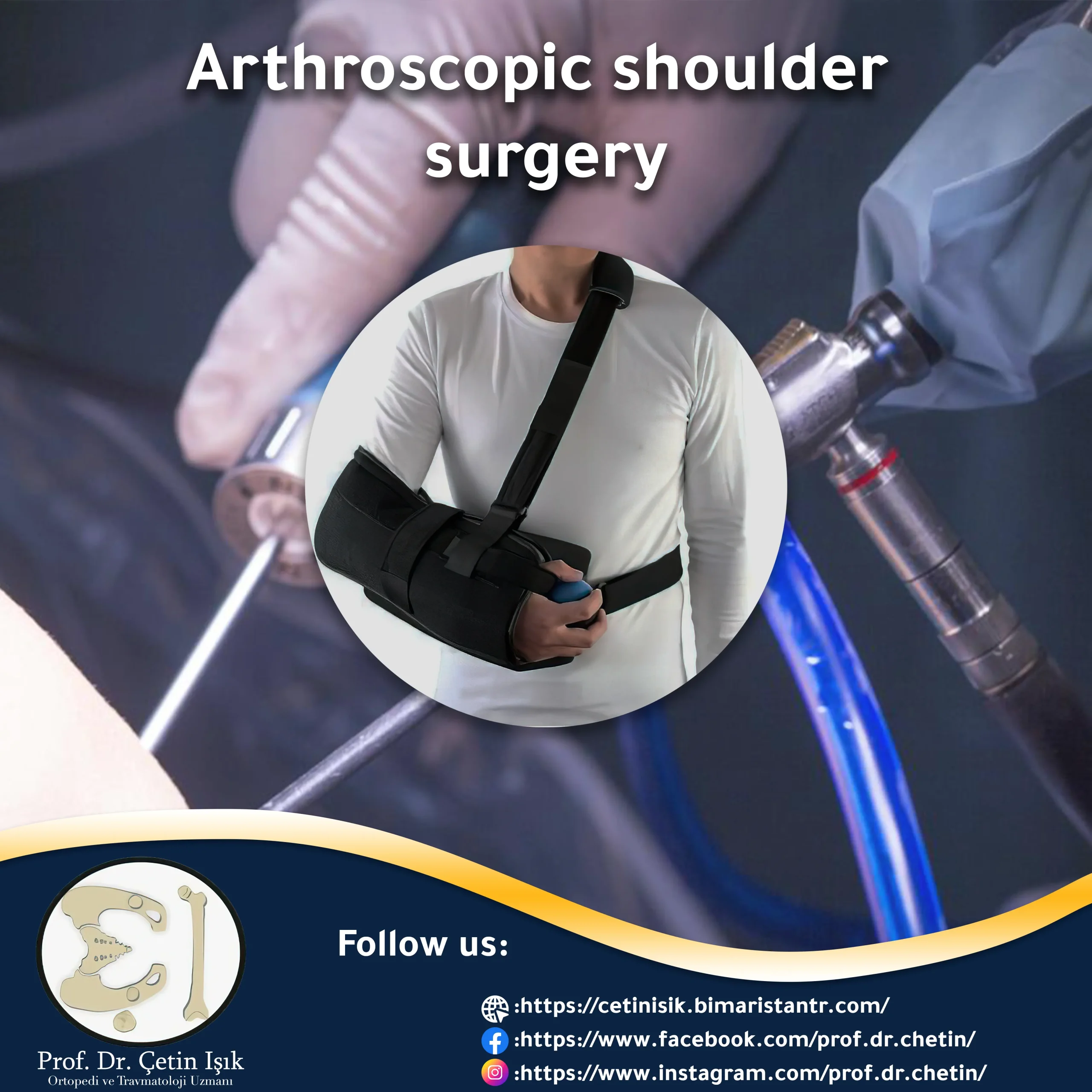ما هو خلع الكتف؟
Shoulder dislocation هو خروج رأس عظمة العضد من التجويف الكتفي، مما يؤدي إلى ألم حاد، فقدان للحركة، وتشوه في شكل المفصل. يُعد الكتف أكثر مفصل عُرضة للخلع في الجسم بسبب حركته الواسعة.
في مدينة إسطنبول، يُعالج خلع الكتف باستخدام أحدث الوسائل الطبية التي تشمل العلاج التحفظي (الغير جراحي) أو الجراحي (عبر المنظار غالبًا)، ضمن مستشفيات مجهزة وكوادر طبية ذات خبرة دولية.

Types of shoulder dislocation
| النوع | الشرح |
|---|---|
| الخلع الأمامي | الأكثر شيوعًا (95%) – يحدث عند السقوط على الذراع الممتدة. |
| الخلع الخلفي | نادر – قد ينتج عن صدمة كهربائية أو نوبة تشنج. |
| الخلع المتكرر | يتكرر بعد أول خلع – شائع لدى الشباب والرياضيين. |
| الخلع المصحوب بكسور | يترافق مع كسر في عظمة الكتف أو الحُق. |
الأعراض الشائعة لخلع الكتف
- ألم مفاجئ وشديد في مفصل الكتف
- تورم أو كدمة في المنطقة المصابة
- تشوه في شكل الكتف
- عدم القدرة على تحريك الذراع
- شعور بالتنميل أو ضعف في الذراع أو اليد
تشخيص خلع الكتف في إسطنبول
يبدأ التشخيص بـ:
- الفحص السريري من قبل طبيب العظام.
- الأشعة السينية (X-Ray) لتحديد نوع الخلع ووجود كسر.
- الرنين المغناطيسي (MRI) في حال الشك بوجود تمزق في الأربطة أو الشفا الحقي (Labrum).
- أحيانًا يُستخدم التصوير الطبقي المحوري (CT) للحالات المعقدة.
خيارات العلاج في إسطنبول
أولًا: العلاج غير الجراحي
| العلاج | التوضيح |
|---|---|
| ردّ الخلع يدويًا | يُعاد المفصل إلى مكانه تحت التخدير الموضعي أو العام. |
| التثبيت بالجبيرة | تثبيت الذراع لمدة 2-4 أسابيع لمنع تكرار الخلع. |
| physical therapy | لتقوية عضلات الكتف واستعادة المدى الحركي. |
يُناسب هذا النوع من العلاج المرضى الذين يعانون من خلع أولي دون تمزق كبير.
ثانيًا: العلاج الجراحي – منظار الكتف
جراحة تنظير الكتف تُستخدم خصوصًا لعلاج:
- الخلع المتكرر
- تمزق الأربطة أو الشفا الحقي
- عدم استقرار المفصل بعد العلاج التحفظي
خطوات الجراحة:
- إجراء شقوق صغيرة في الكتف.
- إدخال كاميرا صغيرة وأدوات دقيقة.
- تثبيت الأربطة المتمزقة أو إصلاح التمزق في الشفا الحقي.
- خياطة الغشاء أو إزالة الأنسجة المتليفة إذا لزم.
تكلفة علاج خلع الكتف في إسطنبول
| نوع العلاج | التكلفة التقريبية (دولار أمريكي) |
|---|---|
| ردّ خلع الكتف يدويًا + تصوير | 300 – 600 |
| علاج تحفظي + جلسات علاج طبيعي | 500 – 1,200 |
| منظار الكتف لإصلاح الأربطة | 3,000 – 4,500 |
| جراحة متقدمة لحالات الخلع المتكرر | 4,500 – 6,500 |
تختلف الأسعار حسب حالة المريض، مستوى المستشفى، ونوع الإقامة المطلوبة.
مقارنة مع دول أخرى
| الدولة | تكلفة جراحة منظار الكتف |
|---|---|
| تركيا (إسطنبول) | 3,000 – 4,500 دولار |
| ألمانيا | 7,000 – 10,000 دولار |
| الإمارات | 6,000 – 9,000 دولار |
| أمريكا | 10,000 – 15,000 دولار |
مزايا العلاج في إسطنبول
- جراحون متخصصون في مناظير الكتف وإصابات المفاصل.
- استخدام أحدث التقنيات في التشخيص والعلاج.
- أسعار منخفضة مع جودة طبية عالية.
- خدمة شاملة للمرضى الدوليين (ترجمة – مواصلات – فندق طبي).
- سرعة في تقديم المواعيد دون فترات انتظار طويلة.
مدة التعافي بعد الجراحة
| المرحلة | المدة التقريبية |
|---|---|
| الراحة بالجبيرة | 2 – 4 أسابيع |
| بدء العلاج الطبيعي | من الأسبوع الثاني |
| استعادة الحركة التدريجية | من الأسبوع الرابع |
| العودة للرياضة | خلال 3 – 6 أشهر |
Common questions
هل الجراحة ضرورية لكل حالات خلع الكتف؟
لا، كثير من الحالات تُعالج تحفظيًا، لكن إذا تكررت الخلوع أو كان هناك تلف في الأربطة، فالجراحة بالمنظار هي الأفضل.
هل الجراحة مؤلمة؟
تُجرى الجراحة تحت التخدير، والألم بعد العملية خفيف ويمكن التحكم به بالأدوية.
كم أحتاج للبقاء في إسطنبول؟
عادةً من 5 إلى 7 أيام كافية لتشخيص الحالة، إجراء العملية، والبدء بالتعافي.
Sources:
Common questions
After treating the patient's shoulder dislocation with closed Reduction and performing rehabilitation exercises and physiotherapy, the shoulder joint should be returned to almost as standard with the return of the field and ability to move the joint as it was. Still, it is recommended to avoid severe pressure on the joint.
Shoulder pain and swelling with muscle spasms and a change in the shoulder shape or the presence of bony lumps protruding under the skin are all signs of a shoulder dislocation that requires treatment.
The risk of dislocating the shoulder is due to damage to the elements adjacent to this joint, such as nerves, blood vessels, and ligaments, and here we may resort to surgical treatment. Therefore, a shoulder dislocation is dangerous if these adjacent areas are injured and require immediate treatment.
How to treat shoulder joint dislocation in children is the same as in adults. The child's hand is fixed, some ice is placed, he is given a pain reliever, and he goes to the nearest hospital or health care center, taking into account the immobilization of the child's hand and not moving it and not trying to return the dislocation except by specialists.
After treatment of a closed shoulder dislocation by the doctor, the doctor will prescribe a shoulder sling that will be placed for several days or weeks. The total recovery will take about 12 to 16 weeks, but you will return to your everyday life after 2 to 4 weeks, during which you will have to be absent from work to rest your shoulder.
But you must avoid sports that require the work of the shoulder joint and lifting heavy objects for a period of one and a half to three months until the joint returns to normal, and of course, if the dislocation is accompanied by a fracture, the recovery period for the treatment of the joint will be more than that.



